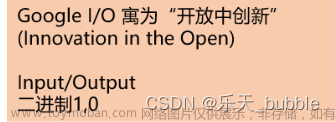1. Reactor是什么
- Reactor 是一个基于Reactive Streams规范的响应式编程框架。它提供了一组用于构建异步、事件驱动、响应式应用程序的工具和库。Reactor 的核心是
Flux(表示一个包含零到多个元素的异步序列)和Mono表示一个包含零或一个元素的异步序列)。 - Reactor 通过提供响应式的操作符,如
map、filter、flatMap等,使得开发者能够方便地进行数据流的转换和处理。
2. Reactor、Callback、CompletableFuture三种形式异步编码对比
- 编码简洁程度
Reactor最优 -
Reactor线程利用率最高(因实现了Reactive Streams规范,拥有背压+事件驱动特性,此处暂不展开)
代码如下:
pom依赖文章来源:https://www.toymoban.com/news/detail-779517.html
<dependencyManagement> <dependencies> <dependency> <groupId>io.projectreactor</groupId> <artifactId>reactor-bom</artifactId> <version>2023.0.0</version> <type>pom</type> <scope>import</scope> </dependency> </dependencies> </dependencyManagement> <dependencies> <dependency> <groupId>io.projectreactor</groupId> <artifactId>reactor-core</artifactId> </dependency> </dependencies>
Callback回调地狱
interface FirstCallback {
void onCompleteFirst(String result);
void onErrorFirst(Exception e);
}
interface SecondCallback {
void onCompleteSecond(String result);
void onErrorSecond(Exception e);
}
interface ThirdCallback {
void onCompleteThird(String result);
void onErrorThird(Exception e);
}
class AsyncOperations {
static void firstOperation(FirstCallback firstCallback) {
new Thread(() -> {
try {
// 模拟异步操作
Thread.sleep(2000);
// 操作完成后调用回调函数
firstCallback.onCompleteFirst("First operation completed");
} catch (Exception e) {
// 发生异常时调用错误回调
firstCallback.onErrorFirst(e);
}
}).start();
}
static void secondOperation(String input, SecondCallback secondCallback) {
new Thread(() -> {
try {
// 模拟异步操作
Thread.sleep(2000);
// 操作完成后调用回调函数
secondCallback.onCompleteSecond("Second operation completed with input: " + input);
} catch (Exception e) {
// 发生异常时调用错误回调
secondCallback.onErrorSecond(e);
}
}).start();
}
static void thirdOperation(String input, ThirdCallback thirdCallback) {
new Thread(() -> {
try {
// 模拟异步操作
Thread.sleep(2000);
// 操作完成后调用回调函数
thirdCallback.onCompleteThird("Third operation completed with input: " + input);
} catch (Exception e) {
// 发生异常时调用错误回调
thirdCallback.onErrorThird(e);
}
}).start();
}
}
public class CallbackHellExample {
public static void main(String[] args) {
AsyncOperations.firstOperation(new FirstCallback() {
@Override
public void onCompleteFirst(String result) {
System.out.println("First Callback: " + result);
// 第一次操作完成后调用第二次操作
AsyncOperations.secondOperation(result, new SecondCallback() {
@Override
public void onCompleteSecond(String result) {
System.out.println("Second Callback: " + result);
// 第二次操作完成后调用第三次操作
AsyncOperations.thirdOperation(result, new ThirdCallback() {
@Override
public void onCompleteThird(String result) {
System.out.println("Third Callback: " + result);
}
@Override
public void onErrorThird(Exception e) {
System.out.println("Error in Third Callback: " + e.getMessage());
}
});
}
@Override
public void onErrorSecond(Exception e) {
System.out.println("Error in Second Callback: " + e.getMessage());
}
});
}
@Override
public void onErrorFirst(Exception e) {
System.out.println("Error in First Callback: " + e.getMessage());
}
});
// 主线程继续执行其他操作
System.out.println("Main thread continues...");
}
}
CompletableFuture优化Callback回调地狱
public class CompletableFutureExample {
public static void main(String[] args) {
CompletableFuture<String> firstOperation = CompletableFuture.supplyAsync(() -> {
try {
// 模拟异步操作
Thread.sleep(2000);
return "First operation completed";
} catch (InterruptedException e) {
throw new RuntimeException(e);
}
});
CompletableFuture<String> secondOperation = firstOperation.thenApplyAsync(result -> {
System.out.println("First CompletableFuture: " + result);
try {
// 模拟异步操作
Thread.sleep(2000);
return "Second operation completed with input: " + result;
} catch (InterruptedException e) {
throw new RuntimeException(e);
}
});
CompletableFuture<String> thirdOperation = secondOperation.thenApplyAsync(result -> {
System.out.println("Second CompletableFuture: " + result);
try {
// 模拟异步操作
Thread.sleep(2000);
return "Third operation completed with input: " + result;
} catch (InterruptedException e) {
throw new RuntimeException(e);
}
});
thirdOperation.whenComplete((result, throwable) -> {
if (throwable == null) {
System.out.println("Third CompletableFuture: " + result);
} else {
System.out.println("Error in CompletableFuture: " + throwable.getMessage());
}
});
// 主线程继续执行其他操作
System.out.println("Main thread continues...");
// 等待所有操作完成
CompletableFuture.allOf(firstOperation, secondOperation, thirdOperation).join();
}
}
Reactor优化Callback回调地狱
public class ReactorOptimizedExample {
public static void main(String[] args) {
Mono.fromCallable(() -> {
// 模拟异步操作
Thread.sleep(2000);
return "First operation completed";
})
.subscribeOn(Schedulers.boundedElastic())
.flatMap(result -> {
System.out.println("First Reactor: " + result);
return Mono.fromCallable(() -> {
// 模拟异步操作
Thread.sleep(2000);
return "Second operation completed with input: " + result;
}).subscribeOn(Schedulers.boundedElastic());
})
.flatMap(result -> {
System.out.println("Second Reactor: " + result);
return Mono.fromCallable(() -> {
// 模拟异步操作
Thread.sleep(2000);
return "Third operation completed with input: " + result;
}).subscribeOn(Schedulers.boundedElastic());
})
.doOnSuccess(result -> System.out.println("Third Reactor: " + result))
.doOnError(error -> System.out.println("Error in Reactor: " + error.getMessage()))
.block(); // 阻塞等待操作完成
// 主线程继续执行其他操作
System.out.println("Main thread continues...");
}
}
学习打卡:Java学习笔记-day06-响应式编程Reactor优化Callback回调地狱文章来源地址https://www.toymoban.com/news/detail-779517.html
到了这里,关于Java学习笔记-day06-响应式编程Reactor与Callback、CompletableFuture三种形式异步编码对比的文章就介绍完了。如果您还想了解更多内容,请在右上角搜索TOY模板网以前的文章或继续浏览下面的相关文章,希望大家以后多多支持TOY模板网!














